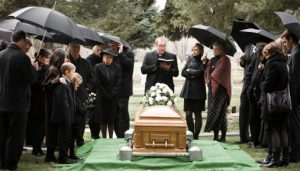restructuring
The President and CEO
Vocabulary
| profit | order (2) | protracted |
| aspect | downturn | employee |
| inherit | household | enterprise |
| loan | persuade | mortgage |
| funeral | show up | responsible |
| pay off | take care | keep it up |
| buddy | recover | coming along |
| widow | reverse | discontinue |
| habit | terminate | resistance |
| rotate | in charge | contribute |
| plead | no time | didn’t matter |
| various | ever been | profitable |


The Entrepreneur
For over 20 years, Alan had build, managed, and expanded his construction company.
He had studied structural engineering at university and worked for another construction firm before starting his own business.
For many years, they had lots of orders, lots of contracts, lots of projects, lots of profits.
Reversal
That is until the economy hit a protracted downturn; the company’s gains went into reverse.
Alan began to spend more time away from home (not at work, but in bars).
Then early one Saturday morning after leaving a club, he failed to stop at a red light . . .
Inheritance
Martha, Alan’s widow now inherited his company (neither their two children, one a web designer, the other an art teacher, wanted to have anything to do with the enterprise).
However Martha had spent most of her adult life raising the children and running the household.
In Charge
Suddenly, she was responsible for a $17 million dollar company that had been the family’s only source of income — and she still had a mortgage and needed to help her children pay off their college loans.
A week after Alan’s funeral, Martha showed up at the company.
The first thing she did was have a meeting with all the executives and top managers and asked them to explain to her how things operated.
Let Us Handle Everything
At first they tried to persuade her to let them run the company and take care of business.
But Martha made it clear that she was serious about being involved.
And so they took her around the company and described the various aspects of the construction trade.
Questions
Whenever the executives showed her a particular product or service that the company offered, Martha would ask, “Uh…how is it coming along?”
If it was running or selling well, she told them to keep it up. If it wasn’t, she said to either change, discontinue or improve it.
New Habit
After doing this for while, Martha got into the habit of asking three main questions: “Is it working?”, “What’s working?” and “What’s not working?”
If something worked, employees were instructed to do more of it. If it didn’t work, they had to improve, change or terminate it.
Resistance
Oftentimes there was resistance. “Well that’s how we’ve always been doing it; that’s how it was under your husband.”
“Well I’m in charge here; I’m the boss now.” she insisted. “So change it, improve it or end it!”
New Questions
Not long afterwards, Martha began asking, “Who’s working?”, “Who’s not working?” and “Is ‘X’ working?”
In short order, she rotated the staff around so that everyone was making the best contribution to company operations.
Out, Out, Out
Those who would not or could not function well were told to go elsewhere.
“But you can’t do this to me!” pleaded more than one employee. “I’ve been working here for over 20 years! Your husband and I went to school together! We were buddies!”
But it didn’t matter to the new CEO.
Performance
Within less than a month, the construction company began performing better. After three months, it had fully recovered. Six months later the company was more profitable that it ever had been in over 20 years.
* * * * * * * *
1. Alan was an entrepreneur. True or false?
2. What happened to Alan and his company?
3. Had Martha worked in the company as a manager or assistant?
4. Did the managers have confidence in her, initially?
5. What became her management style?
6. There was some resistance among the employees. Is this right or wrong? If yes, why was there resistance?
7. She was not as successful as her husband had been. Is this correct or incorrect? Why?
A. Explain the proverb: “He looked at individual trees so much that he couldn’t see the forest.”
B. Could Martha’s method be applied to your institution, company or organization? How could this apply to your company or organization?
C. Would there be much resistance? Would it be impossible to implement?
D. Could you duplicate what Martha did to other organizations?
E. What about government bureaus and agencies? Would it be the same as private enterprises?
F. What might happen in the future?

